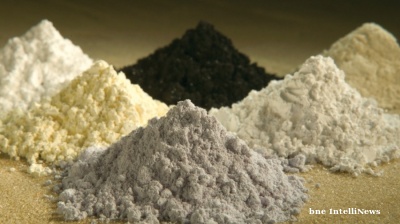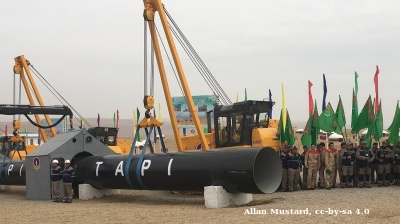2016 is an historic and momentous year for the countries of the Caucasus and Central Asia (CCA) — their 25th year of independence since the breakup of the Soviet Union. From rather challenging beginnings, the CCA countries have made enormous gains over the past quarter century and have much to celebrate.
Yet these celebrations will proceed under the shadow of mounting economic challenges. The prices of oil and other commodities — on which most CCA countries rely heavily — have declined dramatically. Russia’s ongoing recession has also had significant spillover effects on the region through remittances and trade. With the slowdown in China — an increasingly important trading partner — and a tightening of global financial conditions adding to this challenging environment, growth in the CCA is expected to hit a two-decade low in 2016. Average growth for 2017-21 is projected to be 3.7%, well down on the 8.3% growth the region enjoyed in 2000-14. Therefore, to navigate this difficult terrain successfully, the CCA countries urgently need bold policy responses.
For the CCA’s oil exporters, whose growth will drop from 3.2% in 2015 to 1.1% this year, the steep fall in international oil prices and spillovers from the recession in Russia have led to cuts in public investment, a weakening of private demand, and increased exchange rate and monetary policy uncertainty. Lower oil production in some countries is also weighing on the outlook. For the CCA’s oil importers, whose growth will dip from 3.0% last year to 2.6% in 2016, the positive impact of cheaper oil is being more than offset by lower remittances from Russia, lower demand from China for CCA-produced goods, and lower prices in other commodities, such as copper, aluminum, and cotton.
Policymakers across the region have taken steps to cope with these shocks. As a starter, they have allowed their currencies to adjust — with some opting for full exchange rate flexibility — which has been effective in absorbing the impact on export and fiscal revenues, and preserving valuable international reserves. These adjustments, however, have generated pressures on inflation and the financial sector, which is highly dollarized, and has a significant number of unhedged borrowers and large non-performing loans from previous crises.
In these conditions, there is a strong need to modernize exchange rate and monetary policy frameworks, which, for most, includes replacing the exchange rate with an effective interest rate instrument as the nominal anchor. This should be supported by making central banks truly independent, and improving their institutional capacity, transparency and accountability. It is also crucial to have clear communication on policy actions, as a lack of clarity can increase uncertainty, weaken confidence and, ultimately, undermine the effectiveness of policy actions.
In tandem with making exchange rates more flexible, policymakers have increased fiscal spending to both soften the impact of the shocks and support economic activity. Yet, with these shocks expected to last, and with public debt projected to rise, this stance will eventually need to move toward consolidating fiscal positions in the medium term. Such plans should limit public expenditure cuts that harm long-term growth prospects and safeguard targeted social spending. Overall, it is vital for sufficient savings to be set aside for future generations and for public debt to remain on a sustainable footing.
The region also faces an urgent need for structural reforms that promote diversification away from commodities, reduce reliance on remittances, foster a competitive business environment and create jobs. Thanks largely to high commodity prices and strong remittance flows, living standards in the region — as measured by real GDP per capita — doubled in the past 12 years. At the much lower growth rate projected for 2017-21, and in the absence of much-needed reforms, it would take about 25 years for living standards to double again. This underscores just how critical market-enabling reforms, improvements in the quality of education, deepening of financial markets, and broad-based trade integration are to improving the region’s outlook.
Without a doubt, 2016 is a time for celebrating the CCA’s first 25 years of independence—and the many achievements of all these countries. But it is also a time to find ways of becoming less dependent on commodities and remittances, and promoting the development of the private sector as the engine of growth. In a proud and historic year for the CCA, this will not only help to weather the current storm, but also lay the foundations for stronger growth and prosperity in the coming years.
Juha Kahkonen is deputy director of the IMF Middle East and Central Asia department.
Opinion

Don’t be fooled, Northern Cyprus’ new president is no opponent of Erdogan, says academic
Turkey’s powers-that-be said to have anticipated that Tufan Erhurman will pose no major threat.

COMMENT: Hungary’s investment slump shows signs of bottoming, but EU tensions still cast a long shadow
Hungary’s economy has fallen behind its Central European peers in recent years, and the root of this underperformance lies in a sharp and protracted collapse in investment. But a possible change of government next year could change things.

IMF: Global economic outlook shows modest change amid policy shifts and complex forces
Dialing down uncertainty, reducing vulnerabilities, and investing in innovation can help deliver durable economic gains.

COMMENT: China’s new export controls are narrower than first appears
A closer inspection suggests that the scope of China’s new controls on rare earths is narrower than many had initially feared. But they still give officials plenty of leverage over global supply chains, according to Capital Economics.

-01.jpg)


